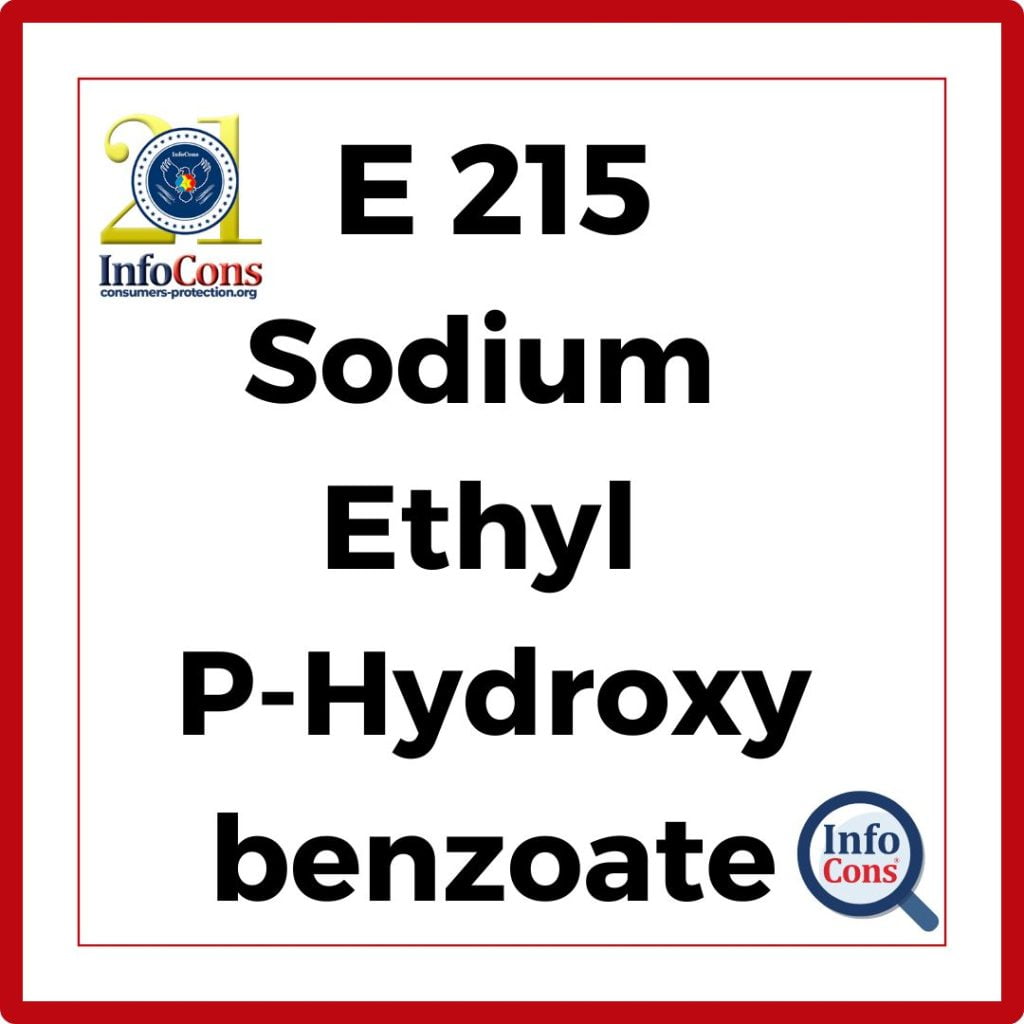
What is the Food Additive E 215 ?
E215 is a synthetic compound primarily used as a preservative in food and cosmetic products, with the chemical formula C9H9NaO3. It is a derivative of benzoic acid, also known as E 210.
E215 belongs to the family of parabens, a group of chemicals commonly used for their antimicrobial properties. Parabens are effective against a wide range of microorganisms, making them valuable in extending the shelf life of products.
Expert Q&A : The Impact of Ultra-Processed Foods on Health – InfoCons Consumer Protection informs you !
What is the recommended daily dose ?
E215, like other parabens, has undergone extensive evaluation to determine its safety for use in consumer products. In the European Union, E215 is permitted for use as a food additive under specific conditions.
The United States Food and Drug Administration (FDA) recognizes certain parabens, including E215, as safe for consumption (GRAS) when used in accordance with good manufacturing practices.
Do you know which products contain the additive E215 – the sodium salt of ethyl parahydroxybenzoate ? InfoCons Consumer Protection informs you !
E215 is used in various industries due to its preservative properties:
- Food Industry: E215 is added to food products to prevent the growth of bacteria, yeast, and molds. It is particularly useful in processed foods, sauces, and beverages, where it helps maintain freshness and extend shelf life.
- Cosmetics: In the cosmetic industry, E215 is used to preserve products such as lotions, creams, and shampoos. Its antimicrobial properties help prevent spoilage and extend the usability of these products.
- Pharmaceuticals: E215 is also found in some pharmaceutical formulations, where it helps prevent microbial contamination and ensure the longevity of medications.
Read also – E214 – ethyl parahydroxybenzoate . InfoCons Consumer Protection informs you about which food products contain this food additive .
Contraindications and Risks
Despite widespread use, there are ongoing debates about the safety of parabens, including the food additive E215.
Parabens (E 214, E 215, E 218, E 219) seem to have estrogenic effects (increasing estrogen production). Combined with azo food dyes, they promote hyperactivity in children (ADHD syndrome).
Some people may experience allergic reactions or sensitivities to parabens, leading to skin irritation or contact dermatitis.
Parabens can persist in the environment and have been detected in water sources, raising concerns about their potential impact on wildlife and ecosystems.
In conclusion, E 215, as a preservative, plays a crucial role in extending the shelf life of various products, from food to cosmetics.
For those concerned about parabens, including E215, seeking out products labeled “paraben-free” or exploring natural preservative alternatives may be viable solutions.
Download the InfoCons application!
Look for products that have a cleaner label or use natural additives. By installing Consumer Protection InfoCons App and scanning the barcodes of food products, you can find out the number and type of food additives they contain.
Author – Cosmina Nițu
Master in Nutrition – Infant and new born nutrition
Sources:
https://www.efsa.europa.eu/en/ – European Food Safety Authority (EFSA)
InfoCons – European Organization for Consumers Protection and Promotion of Programs and Strategies , a full member of the World Organization Consumers International, founding member of the Federation of Consumer Associations, and member of ANEC.